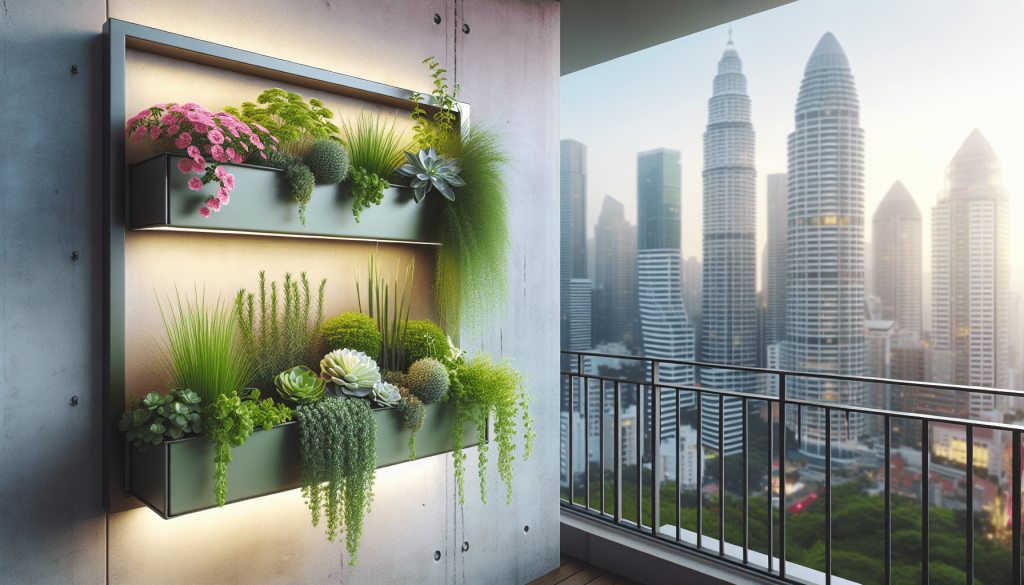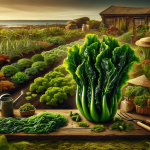This post may contain affiliate links. As an Amazon Associate, we may earn commissions from qualifying purchases.
Have you ever stood in your tiny urban apartment, glancing at the little balcony or that small piece of communal courtyard, and thought, “Is there a way for me to garden here?” If so, you’re not alone. Many city dwellers yearn for a touch of greenery amidst the concrete jungle. Despite the challenges presented by limited space, innovative gardening techniques can transform even the smallest urban area into a lush, green oasis. Let’s embark on a journey to explore some nifty ways that you can bring a bit of nature back into your life, even in the tightest of spaces.
Vertical Gardens: Reaching New Heights
Vertical gardens are a fantastic way to maximize your gardening space. By growing plants upward rather than outward, you can make the most of walls, railings, or any vertical surfaces available. This is especially useful in urban settings where ground space is often at a premium.
Types of Vertical Gardens
There are several types of vertical gardens you might consider:
-
Pocket Planters: These are often made of fabric or felt and can be hung on walls. Each pocket holds soil and a plant, allowing for a lively wall of greenery.
-
Tower Gardens: These stacking planters rise vertically and can be placed in a small footprint, providing multiple levels for plants to grow.
-
Trellises for Vines: Let nature do the climbing for you. Vines such as ivy or jasmine can make a dull wall vibrant with life.
Pros and Cons
Implementing a vertical garden can be rewarding, but it’s important to know what you’re getting into.
| Pros | Cons |
|---|---|
| Maximizes space | May require more maintenance |
| Can improve air quality indoors | Initial setup can be costly |
| Provides privacy and noise reduction | Not all plants are suited for vertical |
Getting Started
To embark on your vertical gardening adventure, you’ll want to choose the right location, ensuring adequate sunlight for your plant selection. Opt for lightweight, quality materials that can support the growth and maintenance of the garden over time.
Container Gardening: Personal Pot Planters
Container gardening is an approachable way to nurture plants in small spaces. Whether you have a windowsill, small patio, or balcony, containers can fit wherever you have room.
Selection of Containers
The container you choose can have a significant impact on the well-being of your plants. Here are some options:
- Clay Pots: Great for herbs or succulents, they offer a classic look but can be heavy.
- Plastic Pots: Lightweight and inexpensive, a good choice for higher locations.
- Self-Watering Containers: Ideal for those who may forget to water frequently; these can help maintain moisture levels.
Plant Choices
Your choice of plants should reflect your environmental conditions and personal preferences. Some urban gardeners have great success with:
- Herbs: Basil, thyme, and parsley often thrive in small pots.
- Vegetables: Tomatoes, peppers, and lettuces can do well with proper sunlight and care.
- Flowers: Marigolds, petunias, or even zinnias can add color to your space.
Maintenance Tips
Container plants require more frequent watering than those in the ground, as soil in containers tends to dry out faster. Additionally, ensure proper drainage to prevent root rot.

Balcony Gardens: Turning Space Into Grace
If you’re blessed with a balcony, you have an ideal spot for a small garden. Balconies offer unique opportunities to create a diverse and beautiful plant haven.
Utilizing Space Effectively
Balconies require careful planning to turn them into gardens. Consider the layout:
- Rail-Planters: Hook over railings and make great use of edges for trailing plants.
- Stackable Planters: Utilize vertical space with tiered setups.
- Hanging Baskets: Perfect for a touch of trailing greenery.
Challenges and Solutions
Balconies often come with specific challenges such as wind, shade, or harsh exposure to sunlight. You can counter these challenges by selecting tough plants or using shade cloths and windbreaks to shelter your blooms.
Community Gardens: Joining Forces
Community gardens have sprouted up in many urban areas, offering plots of land where residents can plant and tend to their gardens collectively. It’s a way to connect with nature and people at the same time.
Benefits of Community Gardens
Engaging with a community garden provides more than just physical space to grow.
- Learning Opportunities: Exchange of knowledge between seasoned and novice gardeners.
- Shared Resources: Access to communal tools and sometimes shared water resources.
- Social Connections: A strong sense of community can develop, with friendships growing alongside the plants.
Finding a Community Garden
To locate a community garden nearby, you can check local municipal resources, community centers, or online platforms that list established gardens looking for new members.

Indoor Gardening: Bringing the Outside In
Not all gardening has to occur outside. Indoor gardens can breathe life into your living area.
Hydroponic and Aquaponic Systems
These systems are soil-less, using water as a growth medium. They can be sophisticated yet compact, making them suitable for indoor use.
Choosing Indoor Plants
Certain plants are particularly well-suited for indoor environments:
- Snake Plant: Hardy and known for improving air quality.
- Peace Lily: Attractive with white blooms, excellent for low light.
- Pothos: Its vining nature and tolerance for infrequent water make it ideal for beginners.
Benefits of Indoor Gardening
Indoor gardens provide aesthetic appeal, fresh produce (with certain vegetables and herbs), and can improve mental health by reducing stress and increasing productivity and concentration.
Rooftop Gardens: Sky-High Horticulture
Transform a flat rooftop into a green space, adding life to an otherwise unused area. Rooftop gardens are a larger scale for urban gardening, providing a mini ecosystem above the city skyline.
Benefits and Considerations
Rooftop gardens provide a plethora of benefits like insulating buildings, managing stormwater, and supporting biodiversity. However, safety and building regulations must be evaluated and followed.
Gardening Tools and Accessories: Handy Helpers
Having the right tools can make your urban gardening experience smoother.
Essential Tools
Here are some must-have tools to keep your small garden thriving:
- Hand Trowel: For digging small holes
- Pruning Shears: To keep your plants well-groomed and healthy
- Watering Can: Small and versatile for indoor and outdoor use with variable water flow
Technological Aids
Consider investing in modern gardening tools such as smart plant monitors or automated irrigation systems to manage your garden with ease.
Conclusion
Having a garden in a small urban space is not only possible but something that can bring immense satisfaction and joy. Whether you’re using vertical walls, containers, or even joining a community garden, you can create a piece of tranquility right in the middle of your busy life. So gather some seeds or seedlings, and let your green thumb guide you to the garden space of your urban dreams.








